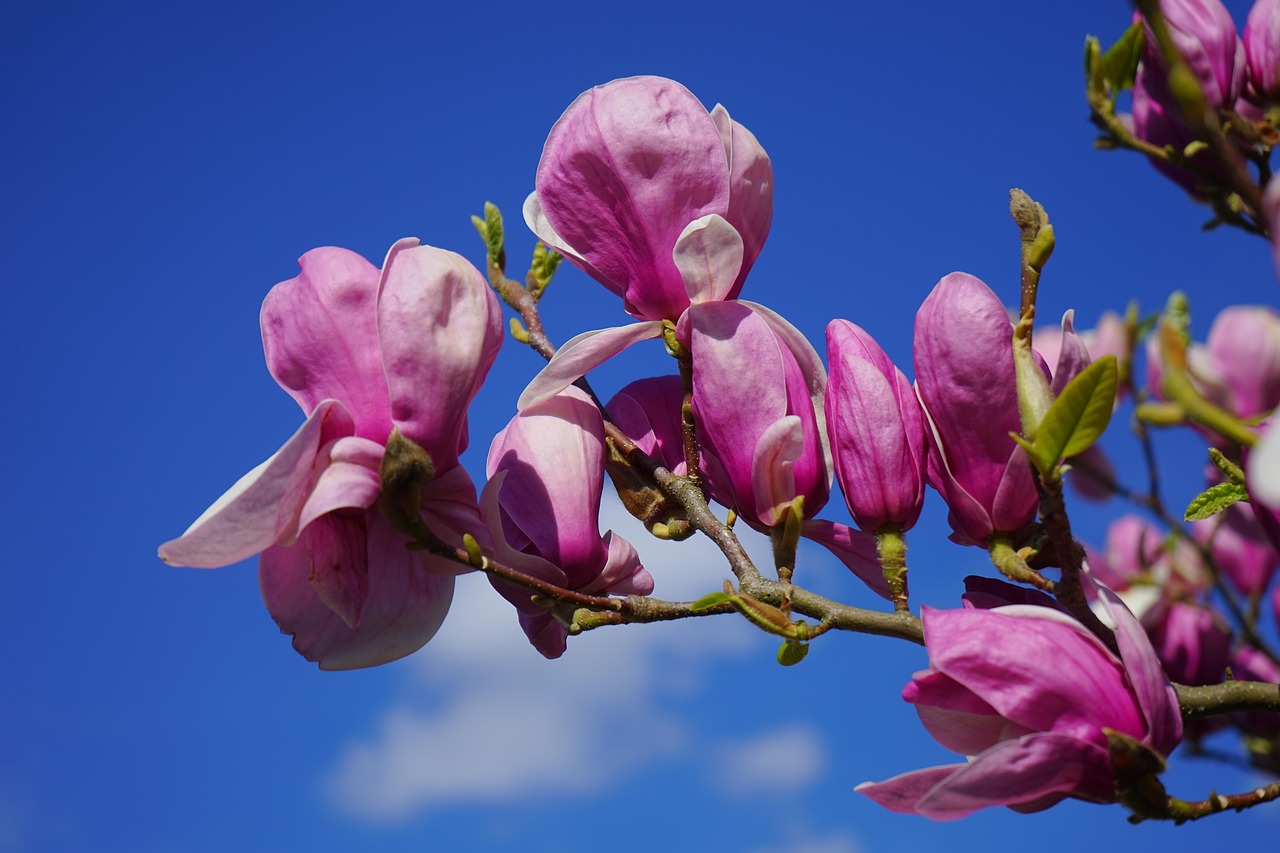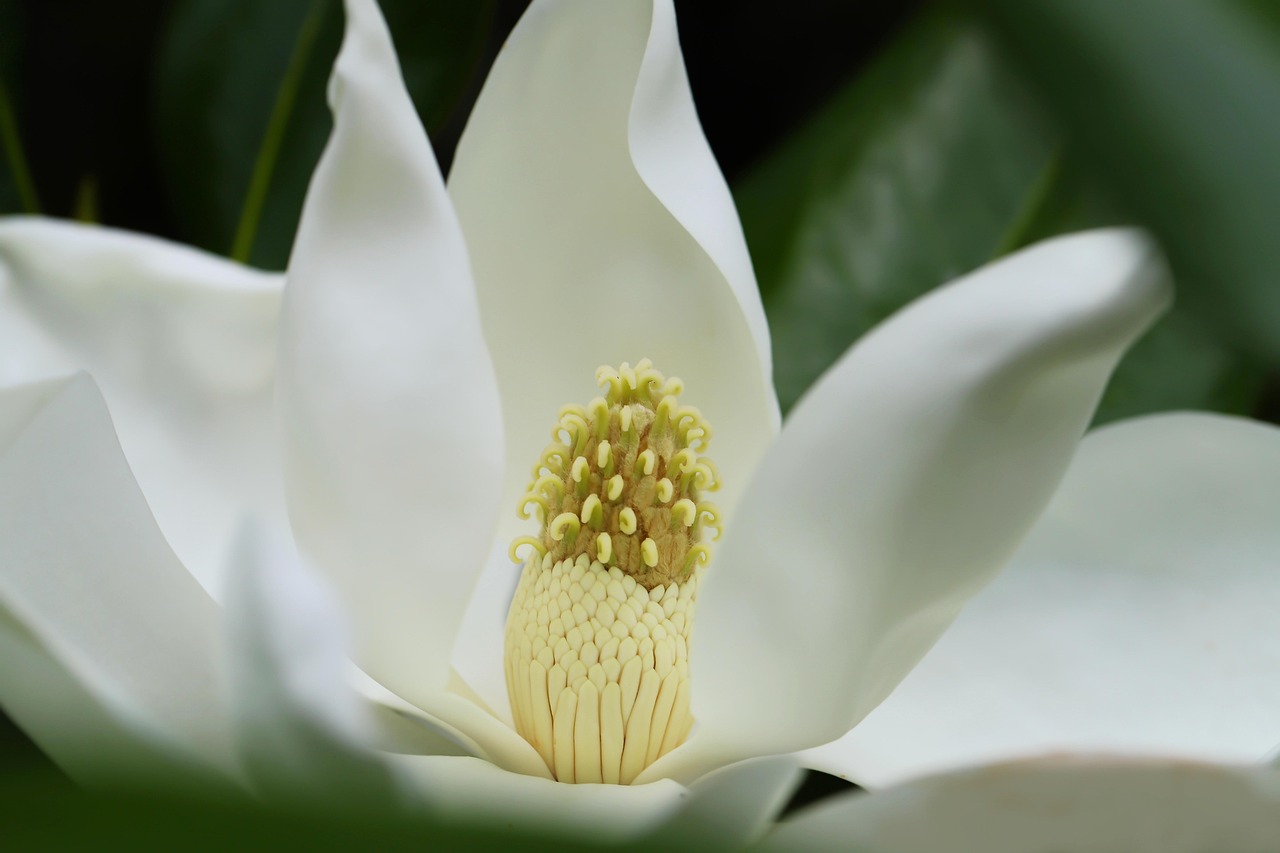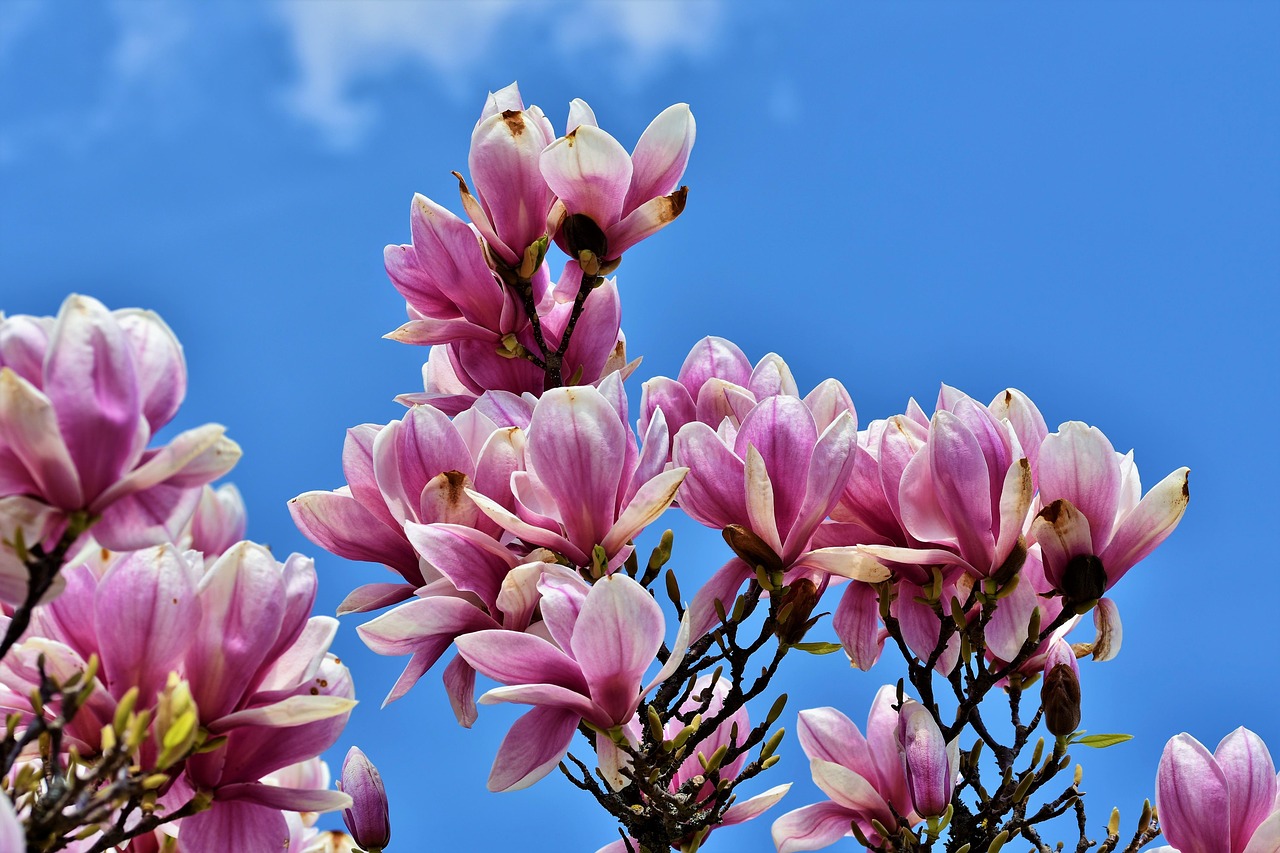Magnolia tree leaves can fall off for various reasons, including environmental stress, pest infestations, and disease. Understanding these potential issues is essential for maintaining a healthy tree and ensuring it thrives in its environment.
Magnolia trees are admired for their stunning flowers and glossy leaves. However, it’s not uncommon for these trees to experience leaf drop at certain times of the year. This phenomenon can be concerning for tree owners who invest time and care into their plants. Identifying the root cause of leaf drop is crucial for implementing effective solutions.
Several factors contribute to the health of a magnolia tree. These factors include soil quality, water availability, and local climate conditions. Additionally, magnolias are susceptible to pests and diseases that can adversely affect their foliage. A thorough understanding of these elements will help you pinpoint why your magnolia tree is losing its leaves.
Common Causes of Leaf Drop

Leaf drop in magnolia trees can occur due to various reasons. Below are some common causes that can lead to this issue:
- Environmental Stress: Extreme temperatures, drought, or heavy rainfall can stress the tree.
- Pests: Insects like scale and aphids can damage leaves and lead to leaf drop.
- Diseases: Fungal infections can weaken the tree and cause leaves to fall prematurely.
- Nutrient Deficiencies: Lack of essential nutrients like nitrogen or magnesium can affect leaf health.
- Improper Watering: Both overwatering and underwatering can lead to leaf drop.
It is important to regularly assess the condition of your magnolia tree. Observing changes in leaf color, size, and overall health can provide clues to underlying issues. The following sections will delve deeper into each of these causes and how they impact leaf retention.
Environmental Stressors
Environmental factors play a significant role in the health of magnolia trees. Understanding how these stressors affect leaf retention is vital for proper care.
Temperature Extremes
Magnolia trees thrive in moderate climates. Exposure to extreme temperatures can lead to stress, which in turn causes leaves to drop. High temperatures during summer months may lead to water loss and dehydration, while freezing temperatures in winter can damage leaf tissues.
Drought Conditions
Drought significantly affects the moisture levels in the soil surrounding the tree. When a magnolia does not receive adequate water, it may start shedding leaves as a survival mechanism. This is particularly true during prolonged dry spells when the tree prioritizes its resources.
Excessive Rainfall
On the other hand, excessive rainfall can lead to soil saturation. If the roots of the magnolia tree are constantly submerged in water, they may become oxygen-starved. This condition often results in root rot, which can lead to leaf drop as the tree struggles to absorb nutrients effectively.
Pest Infestations
Pests are another common reason for magnolia leaf drop. A variety of insects may target these trees, each causing varying degrees of damage.
Aphids
Aphids are small insects that feed on plant sap. Their presence can weaken leaves, causing them to curl and eventually fall off. In addition, aphids secrete a sticky substance called honeydew that attracts other pests like sooty mold.
Scale Insects
Scale insects attach themselves to leaves and stems, sucking out vital nutrients. This feeding can lead to yellowing leaves and increased leaf drop over time. Inspecting the tree regularly for signs of these insects is essential for early intervention.
Diseases Affecting Magnolia Trees
Diseases can also cause significant issues for magnolia trees, leading to leaf loss. Recognizing symptoms early can help in managing these diseases effectively.
Fungal Infections
Fungal diseases such as powdery mildew or anthracnose can weaken a magnolia’s structure. Affected leaves may show discoloration or spots before dropping off entirely. Proper pruning and maintaining good air circulation around the tree can help prevent these infections.
Bacterial Diseases
Bacterial infections can also lead to leaf drop. Bacterial blight is one such example that causes wilting and premature leaf fall. Addressing these infections often requires professional treatment.
In summary, there are numerous reasons why magnolia tree leaves may fall off. Understanding these causes will enable you to take proactive steps in maintaining your tree’s health. Regular monitoring and care are essential for preventing leaf drop and ensuring your magnolia remains vibrant and thriving.
Identifying Leaf Drop Symptoms
Recognizing the symptoms of leaf drop in magnolia trees is crucial for timely intervention. Early detection can prevent further damage and promote recovery. Below are some of the key symptoms to look for when assessing your tree’s health.
Color Changes
One of the first signs of distress in magnolia leaves is a change in color. Healthy magnolia leaves typically have a deep green hue. If you notice:
- Yellowing Leaves: This may indicate nutrient deficiencies or overwatering.
- Browning Edges: Browning at the tips may suggest drought stress or root issues.
- Dark Spots: Dark or black spots can signal fungal infections or bacterial diseases.
Monitoring these color changes can help you identify underlying problems before they escalate.
Leaf Texture and Shape
The texture and shape of the leaves can also provide insights into the tree’s health. Look for:
- Curling Leaves: Leaves that curl inward or outward may indicate pest infestations, particularly from aphids.
- Drooping Leaves: Droopy leaves can be a sign of water stress, either from drought or excessive moisture.
- Wilting Leaves: Wilting leaves often suggest severe water loss or root rot.
Taking note of these changes can assist in diagnosing issues effectively.
Environmental Factors Impacting Leaf Health
The environment surrounding a magnolia tree plays a significant role in its overall health and leaf retention. Various elements can either promote growth or contribute to stress.
Soil Quality
The soil type and its quality are fundamental to the health of your magnolia tree. Magnolias prefer well-draining, slightly acidic soil. Poor soil conditions can lead to:
- Nutrient Deficiencies: Insufficient nutrients can hinder leaf development and result in drop.
- Poor Drainage: Heavy clay or compacted soil can cause root rot, leading to leaf loss.
Testing your soil for pH and nutrient levels can provide valuable information for improving conditions.
Watering Practices
Proper watering is vital for magnolia trees. Both overwatering and underwatering can lead to severe stress, causing leaves to fall. Consider the following:
- Watering Frequency: Ensure the tree receives regular watering, especially during dry spells. However, avoid waterlogging the roots.
- Mulching: Applying mulch around the base can help retain moisture and regulate soil temperature.
Adjusting your watering practices based on weather conditions and soil moisture can greatly benefit your tree’s health.
Pest Management Techniques
<p

>Effective pest management is essential for preventing leaf drop in magnolia trees. Here are some strategies to consider:
Regular Inspections
Inspecting your magnolia regularly for signs of pests is crucial. Look for:
- Sticky Residue: A sticky substance on leaves may indicate aphid or scale infestation.
- Sooty Mold: This black fungus often develops on honeydew excreted by aphids, indicating an infestation.
Natural Predators
Encouraging natural predators can help control pest populations. Ladybugs and lacewings are effective in managing aphid numbers. Planting companion plants that attract these beneficial insects can be a great strategy.
Pesticide Use
If pest issues become severe, using pesticides may be necessary. When selecting a pesticide, consider the following:
- Select Targeted Products: Choose pesticides specifically designed for the pests affecting your magnolia.
- Follow Instructions: Always follow label instructions for safe and effective application.
Pest management requires careful observation and timely action to protect your magnolia tree from leaf drop.
Disease Prevention Strategies
Preventing diseases is just as important as managing pests. Here are some approaches to help keep your magnolia healthy.
Proper Pruning
Pruning helps maintain good air circulation and removes any dead or diseased branches. Consider these tips:

- Timing: Prune during late winter or early spring when the tree is still dormant.
- Cuts: Make clean cuts at a 45-degree angle to help prevent disease entry points.
Avoid Overcrowding
If planting multiple trees, ensure adequate spacing to allow for proper airflow. Overcrowded conditions can promote fungal growth and disease spread.
Fungicide Applications
If fungal infections are detected, applying fungicides may be necessary. Use them according to label directions and consider applying them during periods of high humidity when infections are more likely to occur.
By monitoring environmental factors, implementing effective pest management, and practicing disease prevention techniques, you can significantly reduce the chances of leaf drop in your magnolia tree. Understanding these aspects will empower you to nurture a healthier and more vibrant tree over time.
Seasonal Changes and Their Impact on Leaf Drop
Seasonal changes greatly influence the behavior of magnolia trees, including their leaf drop patterns. Understanding how different seasons affect these trees can help you anticipate and manage potential issues.
Spring Growth
In spring, magnolia trees begin to awaken from dormancy. They produce new leaves and flowers, which are essential for their growth and reproduction. However, if the tree experiences stress during this period, it may drop leaves prematurely. Factors that can contribute to leaf drop in spring include:
- Frost Damage: Late spring frosts can damage tender new leaves, causing them to fall off.
- Insufficient Watering: As new growth emerges, trees require more water. Inadequate hydration can lead to leaf drop.
- Pest Infestations: Spring is the season when pests like aphids begin to emerge. Early detection is crucial.
Ensuring that your magnolia tree receives adequate care during this critical growth period is vital for its overall health.
Summer Stress
Summer brings its own set of challenges for magnolia trees. High temperatures and drought conditions can lead to significant stress, resulting in leaf drop. Consider the following:
- Heat Stress: Prolonged exposure to extreme heat can cause magnolia leaves to curl and fall.
- Water Needs: Increased evaporation during summer means that trees require more frequent watering. Monitoring soil moisture is essential.
- Sunburn: Young or newly planted trees may suffer from sunburn, leading to leaf loss.
During the summer months, providing shade and ensuring consistent watering can help mitigate these issues.
Autumn Leaf Drop
In autumn, leaf drop in magnolia trees can be a natural process. Many deciduous trees shed their leaves to conserve energy during the winter months. However, in magnolias, this process may also indicate underlying stress if it occurs too early. Factors affecting leaf drop in autumn include:
- Pest Damage: If your tree has been infested during the growing season, it may lose its leaves early in the fall.
- Environmental Stress: Drought or nutrient deficiencies earlier in the season can result in premature leaf drop as autumn approaches.
Monitoring your tree’s health throughout the growing season is essential in preventing unexpected autumn leaf loss.
Nutrient Management for Healthy Leaves

Nutrient availability plays a crucial role in maintaining healthy magnolia trees. A lack of essential nutrients can lead to various health issues, including leaf drop. Understanding how to provide proper nutrition is key.
Essential Nutrients
The following nutrients are particularly important for the health of magnolia trees:
- Nitrogen: Essential for leaf growth and overall vigor. A deficiency can lead to yellowing leaves and stunted growth.
- Phosphorus: Vital for root development and flowering. Insufficient phosphorus can hinder a tree’s ability to establish a strong root system.
- Potassium: Helps regulate water uptake and enhances disease resistance. A lack of potassium may lead to weak foliage.
Soil Testing
Conducting a soil test is an effective way to determine the nutrient levels in your garden. Here are steps to follow:
- Collect Samples: Gather soil samples from various locations around the tree’s root zone.
- Send for Analysis: Send your samples to a local extension service or garden center that offers soil testing.
- Follow Recommendations: Based on the test results, amend your soil with the necessary fertilizers or organic matter.
Adequate nutrient management will significantly improve the overall health of your magnolia tree.
Irrigation Techniques for Optimal Health
Irrigation plays a critical role in maintaining the health of magnolia trees. Proper watering techniques can help prevent both overwatering and underwatering, which are common causes of leaf drop.
Irrigation Methods
The following irrigation methods can be effective for ensuring your magnolia tree receives the appropriate amount of water:
- Drip Irrigation: This method delivers water directly to the root zone, reducing evaporation and runoff.
- Soaker Hoses: Soaker hoses allow water to seep slowly into the soil, providing deep watering without saturating the surface.
- Hand Watering: For smaller trees or specific areas, hand watering allows you to control the amount of water being applied.
Watering Schedule
Developing a consistent watering schedule is essential. Consider the following guidelines:
- Frequency: Water young magnolia trees at least once a week during dry spells. Mature trees may require less frequent watering.
- Amount: Aim for deep watering that reaches 12 to 18 inches into the soil to encourage deep root growth.
- Seasonal Adjustments: Adjust your watering schedule based on seasonal weather patterns and rainfall amounts.
By implementing effective irrigation techniques and maintaining a proper schedule, you can help ensure that your magnolia tree remains healthy and vibrant throughout its growing season.
Additional Care Tips for Magnolia Trees
In addition to proper watering, pest management, and nutrient management, there are several other care practices that can enhance the health and longevity of your magnolia tree. Implementing these practices can help you avoid potential leaf drop and keep your tree thriving.
Mulching
Applying mulch around the base of your magnolia tree can provide numerous benefits:
- Moisture Retention: Mulch helps retain soil moisture, reducing the need for frequent watering.
- Temperature Regulation: It insulates the soil, helping to maintain a stable temperature for the roots.
- Weed Control: A layer of mulch suppresses weeds that compete with your tree for nutrients and water.
When applying mulch, use organic materials such as wood chips or shredded bark. Aim for a layer of 2 to 4 inches, but keep it away from the trunk to prevent rot.
Fertilization
Fertilizing your magnolia tree appropriately can boost its health and resilience. Here are guidelines for effective fertilization:
- Timing: Fertilize in early spring before new growth begins. This allows the tree to utilize nutrients effectively during the growing season.
- Type of Fertilizer: Use a balanced slow-release fertilizer specifically formulated for trees. Look for products with a ratio like 10-10-10 or similar.
- Application: Follow the instructions on the fertilizer package for proper application rates, and avoid over-fertilizing, which can harm the tree.
Regular fertilization, when done correctly, can lead to lush foliage and vibrant blooms, supporting the overall health of your magnolia.
Seasonal Protection
Seasonal protection measures can help safeguard your magnolia tree from extreme weather conditions:
- Winter Protection: In colder climates, consider wrapping young trees with burlap or using frost cloth to protect them from harsh winds and freezing temperatures.
- Summer Shade: Providing temporary shade during extreme heat can prevent sunburn and excessive stress on the leaves.
By taking these protective measures, you can minimize the impact of seasonal changes on your magnolia tree’s health.
Final Thoughts
Understanding why magnolia tree leaves fall off is essential for any tree owner aiming to maintain a healthy and beautiful landscape. By recognizing the various causes of leaf drop—ranging from environmental stressors and pests to nutrient deficiencies—you can take proactive steps to mitigate these issues. Implementing proper watering techniques, pest management strategies, and seasonal care practices will significantly enhance the vitality of your magnolia tree.
In summary, regular monitoring and prompt action are key to preserving the health of your magnolia. By being attentive to the symptoms of distress and addressing them accordingly, you can help ensure that your magnolia tree continues to thrive for years to come. With care and diligence, these magnificent trees can remain a stunning focal point in your garden, offering beauty and shade throughout the seasons.
Ultimately, a well-cared-for magnolia not only enhances your outdoor space but also contributes positively to the local ecosystem. Embrace the journey of nurturing your magnolia tree, and enjoy the rewards of its splendid foliage and fragrant blooms.
